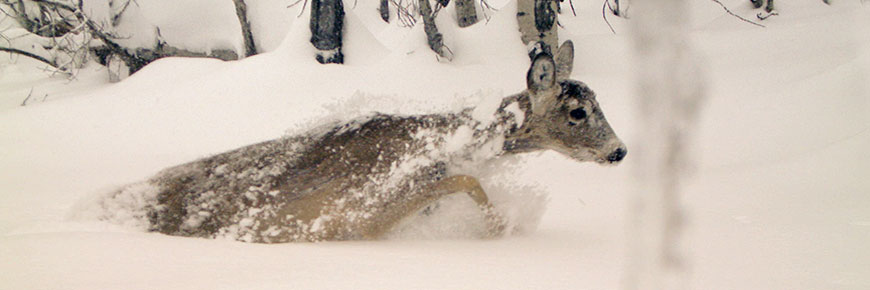
Champion winter survivors
Waterton Lakes National Park
Surviving the long, cold winters in Waterton Lakes National Park can be a world-class challenge. We thought we would spotlight some of the champion winter survivors among our wildlife inhabitants.
Champion migrators
Some animals avoid the winter challenges altogether by heading for warmer climes. This includes many bird species, but also many of our bats. This may sound like taking the easy way out, but some species travel distances that would impress any Olympian!


Champion adaptors
Many animals remain in Waterton and are active throughout the winter. These animals adapt to the changing weather, undergoing morphological, physiological and behavioural changes to survive. To keep warm, many animals grow thicker winter coats or pelage.
In some species, the new fur is white, also providing camouflage in the snow (e.g. weasels and snowshoe hare). Because food can be scarce in the winter, some animals cache food during the summer and fall to help get them through the winter (e.g. squirrels, mice, pikas and beavers).
Because of scarcity, many animals must change their diet as the seasons change. For example, during the spring, summer and fall the red fox supplements its diet with fruit and insects, but during the winter it must survive on small mammals.


Champion snowshoers
Some species are physically well equipped for winter survival. Lynx, snowshoe hare and wolverine have large feet that act like snowshoes. This allows them to travel much more easily in deep snow, allowing them to access resources out of reach for other species.


Champion sleepers
Another winter survival strategy is dormancy (hibernation and torpor). In these animals, the body temperature drops and both heartbeat and breathing slow down. Through a controlled reduction in body metabolism they survive the winter by conserving energy.


Related links
- Date modified :